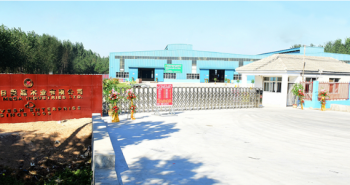Composition & manufacturing process
Flax shives from the stalk of the flax plant comprise the bulk of flaxboard and are prepared in a mechanical chipper and can also contain other raw materials such as particles of wood (wood, flakes, chips, shavings, saw dust and similar materials). These chips are compressed and are generally bound together with synthetic resin systems such as urea formaldehyde (UF) or melamine urea-formaldehyde (MUF), though phenol- formaldehyde (PF) and polymeric methylene di-isocyanate (PMDI) are used by some manufacturers.
The binding system employed depends on the end use intended and the grade of the product. The most common resin employed is urea-formaldehyde, but this is only suitable for use in dry conditions: the other three resin systems confer a measure of moisture resistance to the composite.
Some manufacturers of flaxboard produce a three-layer type, obtained through the separate gluing of the course and fine fractions of flax shives.
Typical constituents of a flaxboard are of the order (by mass) of at least 70% flax shives and which can also contain other raw materials such as particles of wood (wood flakes, chips, shavings, saw dust and similar materials), with the addition of a polymeric adhesive. PMDI, 5-7% water, 2-3 % Nitrated Ammonium and 1-2% paraffin wax solids.
Applications
The special properties of flaxboard have several advantages in a wide range of non-load bearing applications. Its lightweight properties and natural characteristics which aid fire resistance make it a natural choice for fire resistant door cores and partitions. Different grades of the product are available for different environmental conditions, ranging from general purpose board for use in dry conditions (for filling purposes and veneering) to non load bearing board for use in humid conditions. The higher grades also find use for interior fitment (including furniture and worktops).
Flaxboard can also find uses for doors, partitioning walls and packaging (protection sheets), table tennis tables, and warehouse shelves.

